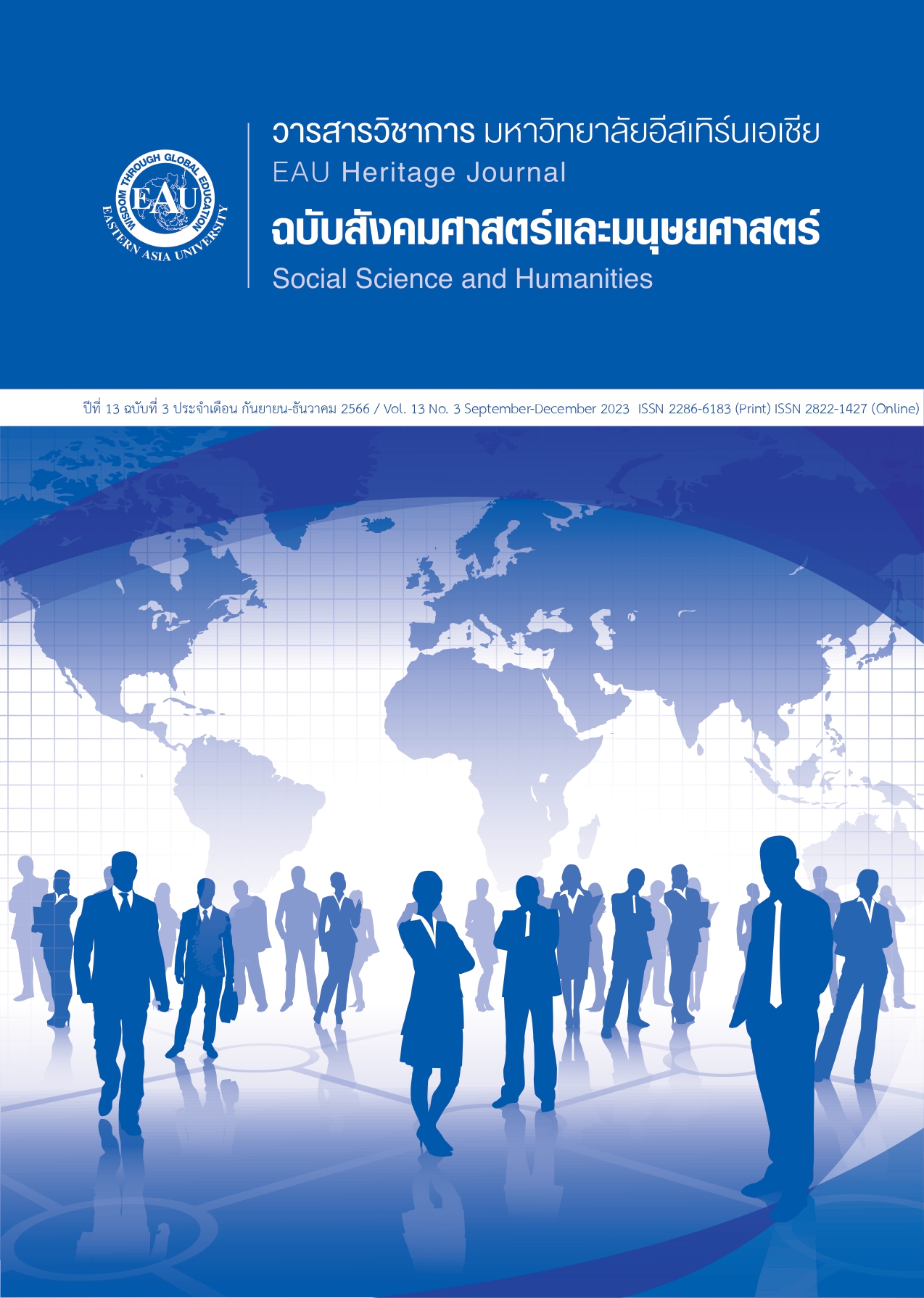การพัฒนารูปแบบการเรียนรู้แบบยูบิควิตัสที่ส่งเสริมการเรียนรู้แบบนำตนเอง รายวิชาเคมีทั่วไป 1 สำหรับนักศึกษามหาวิทยาลัยราชภัฏราชนครินทร์
คำสำคัญ:
การเรียนการสอนยูบิควิตัส, การเรียนรู้แบบนำตนเองบทคัดย่อ
การวิจัยนี้มีวัตถุประสงค์เพื่อ (1) เพื่อพัฒนารูปแบบการเรียนรู้แบบยูบิควิตัสส่งเสริมการเรียนรู้แบบนำตนเอง รายวิชาเคมีทั่วไป 1 สำหรับนักศึกษามหาวิทยาลัยราชภัฏราชนครินทร์ (2) เพื่อเปรียบเทียบผลสัมฤทธิ์ทางการเรียนก่อนเรียนและหลังเรียนของนักศึกษา (3) เพื่อศึกษาระดับความพึงพอใจของนักศึกษาที่มีต่อระบบการจัดการเรียนรู้แบบยูบิควิตัส และ (4) เพื่อศึกษาระดับพฤติกรรมการนำตนเองของนักศึกษา กลุ่มตัวอย่างที่ใช้ในการวิจัยครั้งนี้ คือ นักศึกษาชั้นปีที่ 1 สาขาวิชาการผลิตอัตโนมัติ และการจัดการอุตสาหกรรม คณะเทคโนโลยีอุตสาหกรรม มหาวิทยาลัยราชภัฏราชนครินทร์ จำนวน 26 คน ซึ่งผู้วิจัยใช้วิธีการเลือกแบบเฉพาะเจาะจง จากประชากร 57 คน เก็บรวบรวมข้อมูลโดยใช้ (1) แบบประเมินรูปแบบการจัดการเรียนรู้ (2) แบบทดสอบวัดผลสัมฤทธิ์ทางการเรียน (3) แบบวัดความพึงพอใจ (4). แบบวัดพฤติกรรมการนำตนเอง วิธีวิเคราะห์ข้อมูลโดยใช้ค่าเฉลี่ยส่วนเบี่ยงเบนมาตรฐาน และการทดสอบที ผลการวิจัยพบว่า (1) รูปแบบการเรียนรู้แบบยูบิควิตัส ประกอบด้วย 8 องค์ประกอบ คือ ระบบการจัดการเรียนรู้ ระบบบริหารจัดการเรียนรู้บนเครือข่าย ระบบการจัดการเรียนรู้แบบนำตนเอง ระบบเนื้อหา ผู้สอน ผู้เรียน ระบบการวัดและประเมินผล และอุปกรณ์ ผู้ทรงคุณวุฒิประเมินความเป็นได้และความถูกต้องตามทฤษฎีอยู่ในระดับมากที่สุด ( = 4.80- 5.00 SD = 0.00 - 0.55) (2) ผลสัมฤทธิ์ทางการเรียนหลักเรียนสูงกว่าก่อนเรียนอย่างมีนัยสำคัญที่ระดับ .05 (3) พบว่านักศึกษามีความพึงพอใจอยู่ในระดับมากที่สุดทุกด้าน ( = 4.63 SD = 0.53) และ (4) พฤติกรรมการนำตนเองของนักศึกษาภาพรวมอยู่ในระดับดี.( = 3.51 SD = 1.33).
เอกสารอ้างอิง
Chang, Lei. (1993). Using Confirmatory Factor Analysis of Multitrait – Multimethod Data to Assess
the Psychometrical of 4-Point and 6-Point Likert Type Scales. Paper presented at the
Annual Meeting of the National Council on Measurement in Education.
Champakul, P., Innoi, S., & Boonphak, K. (2021). The development of ubiquitous learning
management system using imagineering on construction of multimedia. journal of
education Naresuan University, 23(3), 175-189. (in Thai)
Costa, A. L., & Kallick, B. (2004). Launching self-directed learners. Educational leadership, 62, 51-57.
Inthachot, M. (2022). Practical skills through self-led learning of students at Rajamangala University of
Technology Thanyaburi. Journal of Social Science and Buddhist Anthropology, 7(6), 131-145.
(in Thai)
Jones, V. and Jo, J.H. (2004). “Ubiquitous Learning Environment : An Adaptive TeachingSystem Using
Ubiquitous Technology.” [ online ]. Retrieved June
,2021from/https://www.researchgate.net/publication/29453419
_Ubiquitous_learning_environment_An_adaptive_teaching_system_using_ubiquitous_technology
Khoochonthara, P. (2016). The role of e-Learning and self-guided learning. Thammasat University
Hospital Journal Online, 1(1), 53-61..
Komanee, S. (2019). Conditioning model. Educational environment for Higher education students.
Journal of Education, Burapha University, 30(3), 30-48. (in Thai)
Phromwong,.C. (2010). “System and organization” in Educational system organization.
Compilation of subject matter 27703 Unit 1-8 Graduate Studies in Education
Sukhothai Thammathirat Open University Nonthabu (in Thai)
Khaemmanee, T. (2016). Instructional Styles: Multiple Choices. 20th edition. Bangkok:
Chulalongkorn University Press. (in Thai)
Liwa, J. (2019). Lesson Development. interactive electronics in Ubiquitous environment.Journal of
Technology Management Rajabhat Maha Sarakham University, 6(1), 89-97. (in Thai)
Pholchanngam, P. (2022). The Development of Learning Management System for U-Learning to the
Vocational Education: The Development of Learning Management System for U-Learning to the
Vocational Education. Research and Innovation Journal of Vocational Education Institute,
Bangkok, Thailand. 5(1). (in Thai)
Prompalad, N., Kaosaiyaporn,O., Atisabda, W., & Sinlapametakul, A. (2021). The development of
learning styles using technology. Virtual Reality in Ubiqui Learning Environment Virtus to promote
creativity in Islamic art. Journal of Education and Innovative Learning, 1(1), 79-95. (in Thai)
Roawroo, I. (2010). The development of a blended learning model to increase the efficiency of self-
education. Doctor of Philosophy Thesis, King Mongkut's University of Technology North Bangkok. (in Thai)
Ruengsri,P. (2017). The development of teaching and learning activities in reverse classroom style
through online media that affects self-leading of high school students in academic, career and
technology. Veridian E-Journal, Silpakorn University (Humanities) , Social Sciences and arts),
(3), 2221-2233. (in Thai)
Siksen, S., Phumeechanya, N., & Laisema, S. (2018). The Development of System and Collaborative
Learning Activities in Ubiquitious Learning Environments Using Computer Tablet with QR Code.
Veridian E-Journal, Silpakorn University (Humanities, Social Sciences and arts), 11(5), 645-659.
(in Thai)
Sowers, J. A., et. Al. (2004). “Evaluation of the Effects of an Inservice Training Program on
Nursing Faculty Member Perceptions, Knowledge, and Concerns About Students with
Disabilities”. Journal of Nursing Education. Vol. 43 no. 6 (June 2004) p.248-52 .
Thanakitchareonsuk, T & PipatJamroenkul, Y. (2018). The project is a ubiquitous learning platform for
undergraduate students. Journal of Educational Studies, 33(2), 87-94. (in Thai)
Thongkaew, T. (2020). Educational design in a new way of life: the impact of the COVID-19
epidemic.Teachers Council of Thailand JOURNAL OF TEACHER PROFESSIONAL DEVELOPMENT,
(2) , (in Thai)
Yodsaneha, S.,Sompong, N., & Soopeerak, S. (2020). Netivism to develop conversational skills English
among students at Rajamangala University of Technology Thanyaburi. Journal of Social Science
and Buddhist Anthropology, 5(8), 343-355. (in Thai)





